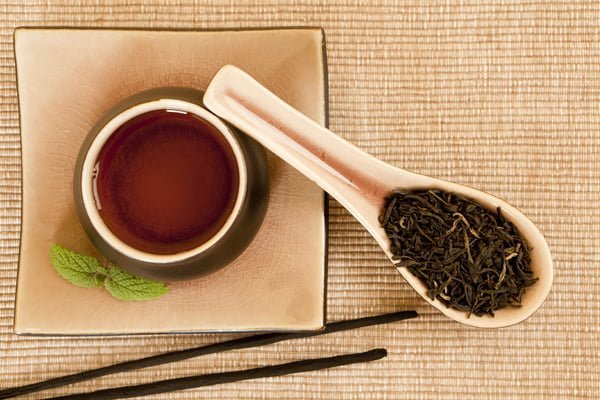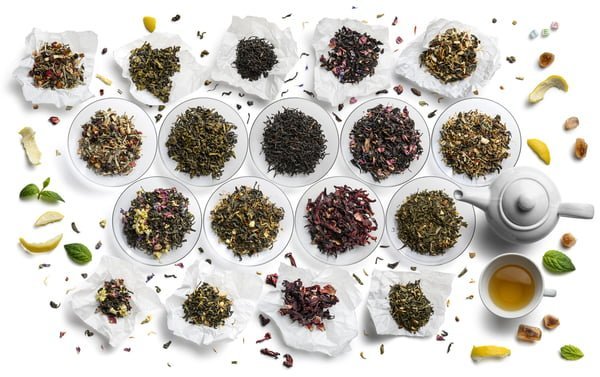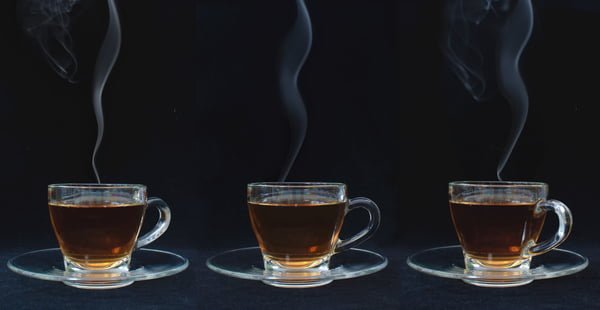The Popularity of Tea Worldwide
Tea is one of the most popular beverages in the world, second only to water. It is consumed by people from all walks of life across cultures and continents. The history of tea dates back thousands of years, and its popularity has only grown since then.
It is enjoyed for its taste, aroma, and various health benefits. Tea culture varies greatly worldwide, with unique brewing methods, serving customs, and flavor preferences.
In some countries like China and Japan, tea ceremonies are important cultural events passed down through generations. In other countries like India and Sri Lanka, tea is a staple beverage millions enjoy daily.
Purpose of the Article: Exploring Different Types of Tea Around the World

This article aims to provide an in-depth exploration of various types of tea globally. From Chinese green teas to African red bush teas, we will delve into the nuances that make each type unique.
We’ll explore their history and cultural significance and examine their distinct flavors. We will also discuss the health benefits of different teas, such as antioxidants in green teas or anti-inflammatory properties in rooibos (red bush) tea from South Africa.
Whether you are a tea enthusiast or simply looking to expand your knowledge on different types of teas worldwide, this article aims to provide a comprehensive guide for you to enjoy. So sit back with a cuppa (slang for “cup” used in the UK), and let’s explore together!
Chinese Tea
Ancient Roots and Rich Culture
China is the birthplace of tea, and Chinese tea culture has a history of over 5,000 years. According to legend, the emperor Shennong accidentally discovered tea when a few leaves fell into his boiling water.
For centuries, tea has played an important role in Chinese culture and society; it has been used for medicinal purposes, as a gift to show respect or affection, and as a symbol of status. In ancient China, the art of making and drinking tea was highly esteemed.
It was seen as a way to connect with nature and appreciate its beauty, reflected in traditional Chinese poetry and art depicting mountains, rivers, flowers, and birds. The philosophical concepts of harmony, balance, simplicity, and mindfulness are also closely associated with Chinese tea culture.
Types of Chinese Tea

There are five main types of Chinese tea: green tea (绿茶), black tea (红茶), white tea (白茶), oolong tea (乌龙茶), and pu’erh tea (普洱茶). Each type has unique characteristics regarding taste, aroma, or brewing method. Green teas are unoxidized or slightly oxidized teas that have undergone minimal processing after being plucked from the plant.
They have fresh vegetal flavors ranging from grassy to nutty. Famous varieties include Longjing (Dragon Well) from Hangzhou, which tastes nutty-sweet with floral notes.
Black teas are fully oxidized teas that undergo withering, then rolling and oxidation before being baked/dried at high temperatures. Black teas have robust flavors ranging from malty to smoky or sweet depending on their origin and processing methods, such as Dian Hong from Yunnan, which has a rich and fruity taste.
White teas are the least processed and are made of young leaves or buds; they undergo minimal processing, such as sun-drying or low-temperature baking. White teas have delicate flavors ranging from floral to sweet with light bodies.
Silver needle tea(白毫银针) is considered the highest quality white tea that has a unique taste of honeydew melon. Oolong teas are semi-oxidized teas that undergo partial oxidation before being baked/dried at low temperatures.
They have complex flavors ranging from floral to nutty and fruity with a smooth texture or roasted aroma, depending on how it was processed. Famous varieties include Tie Guan Yin (Iron Goddess) from Anxi, Fujian Province, which has a light orchid aroma.
Pu’erh teas are post-fermented teas that can be aged for years or decades; similar to wine, these teas go through microbial fermentation and oxidation before being compressed into cakes or bricks. Pu’erh tastes earthy with subtle sweetness and is known to have many health benefits, such as aiding digestion and weight management.
Unique Characteristics and Flavors
Each type of Chinese tea offers unique characteristics in terms of flavor, aroma, color, brewing method, and health benefits. Chinese green tea has fresh grassy or nutty flavors with light-bodied liquor; black tea has robust, malty notes with dark color; white tea offers delicate floral honey-like sweetness; oolong gives complex floral-fruity-nutty notes while pu’erh presents earthy hints with a subtle sweetness.
Chinese tea is brewed using traditional methods such as the gongfu style, where small teapots are used to brew high-quality loose leaves multiple times, allowing for an exploration of its unique taste profile over time, like how it changes during each steeping. Beyond its exquisite taste profile and cultural significance, Chinese Tea is known for its many health benefits, particularly its high levels of antioxidants and other beneficial compounds.
Some studies have found that regular tea consumption can help with weight loss, improve mental alertness, and reduce the risk of heart disease. Chinese tea culture is integral to Chinese society, showcasing the country’s rich history and traditions.
With over five thousand years of history, this time-honored beverage has been revered for its flavor and medicinal purposes. Each type of Chinese tea offers a unique taste profile with complex flavors, making it worth exploring different teas from China.
Japanese Tea

Japan has a long tea cultivation and consumption history, dating back to the 9th century when Buddhist monks brought tea from China. Today, tea is deeply ingrained in Japanese culture and is enjoyed in many forms, from traditional ceremonies to everyday meals. Japanese tea farmers are known for their attention to detail and high-quality standards, producing some of the finest teas in the world.
History and Culture Surrounding Japanese Tea
In Japan, tea is not just a beverage but also a symbol of hospitality, respect, and harmony. The country has distinct teaware such as the chawan (tea bowl), chasen (bamboo whisk), chakin (tea cloth), and kyusu or houhin (teapot).
These utensils are used during traditional tea ceremonies known as chanoyu or sado. The culture surrounding Japanese tea has strong ties to Zen Buddhism.
The focus on mindfulness and simplicity is reflected in how tea ceremonies are performed with handcrafted utensils that are often simple yet elegant. The idea is to create an atmosphere where guests can feel relaxed while enjoying every aspect of their experience.
Types of Japanese Tea
Several Japanese teas range from mild and grassy to strong and bold flavors. Sencha: This is one of Japan’s most common green teas made by steaming whole leaves before rolling them into thin needle shapes.
It has a bright green color with a sweet vegetal flavor that’s slightly bitter. Matcha: Matcha is made by grinding shaded green tea leaves into a fine powder.
It’s used mainly for ceremonial occasions where guests sit on mats while sipping thick frothy matcha brewed with hot water using a bamboo whisk called chasen. Genmaicha: This blend contains roasted brown rice mixed with sencha or bancha, giving it a nutty and popcorn-like flavor.
It’s often called the “popcorn tea” due to its toasted kernel aroma. Hojicha: This roasted tea is made by roasting sencha or bancha leaves over charcoal resulting in a brown color with a smoky aroma and flavor.
Gyokuro: Known as the “jade dew,” this tea is made by shading the leaves from sunlight for several weeks. The result is a dark green color with a sweet and delicate flavor.
Unique Characteristics and Flavors of Each Type
Each Japanese tea has its distinct characteristics that make them stand out from one another. Sencha has a fresh, vegetal flavor with mild bitterness at the end. Matcha has an umami-rich taste with a creamy texture, while genmaicha offers roasted brown rice notes paired with grassy sencha undertones.
Hojicha has a nutty, smoky taste, while gyokuro offers a sweet, floral aroma and delicate taste. Japanese teas are known for their high quality, attention to detail during production, and cultural significance in Japan.
With so many different types, there’s something for every tea lover’s palate. Their unique flavors and characteristics will leave an impression on all who try them!
Indian Tea

History and Culture of Indian Tea
India has a rich history of tea, dating back to the British colonial era. The British introduced tea to India in the early 1800s to compete with China’s monopoly on the tea trade. Today, India is one of the world’s largest producers and consumers of tea.
The drink is an integral part of Indian culture and is consumed throughout the day, often accompanied by snacks. The tea cultivation in India began with Assam, located in Northeast India and shares its borders with Bangladesh and Bhutan.
Assam produces some of the world’s most popular black teas. Tea cultivation spread to Darjeeling, Nilgiri Hills, and Kangra Valley.
Types of Indian Tea
There are several types of Indian teas available around the world that have their unique characteristics and flavors. One such type is chai or masala chai, made from black tea brewed with spices such as cardamom, cinnamon, ginger, and clove.
Chai has become immensely popular globally over recent years due to its comforting taste and health benefits. Darjeeling tea hails from Darjeeling district in West Bengal state, India at an elevation varying from 4-34oo ft above sea level.
Known for its musky spiciness and floral aroma, it is often called “the champagne of teas.” The light brown liquor produces distinctive flavors ranging from flowery to fruity, depending on when you pick it. Assam also produces one-of-a-kind black teas known for their strong flavor profile featuring malty notes.
These deep amber-colored teas are often used in blends like English Breakfast or Irish Breakfast because they stand up well when combined with milk or sugar. Nilgiri tea, also known as the “fragrant one,” is grown in the Nilgiri Hills of southern India.
This tea has a unique citrusy flavor, often compared to an orange blossom. A light brown liquor with mellow astringency makes it the perfect tea to enjoy throughout the day.
Unique Characteristics and Flavors of Each Type
Each type of Indian tea has unique characteristics and flavors based on its history, processing methods, and terroir. Depending on the region and type, the flavors range from floral, fruity to spicy or malty notes. Darjeeling teas have a musky spiciness with floral notes that make them stand out.
Assam teas have a stronger malty flavor that works well with milk or sugar. Nilgiri tea is known for its unique citrusy flavor profile.
Chai’s sweetness comes from added spices like cinnamon or ginger while still having the robustness of black tea. These spices work well when consumed together to create an immersive flavor profile.
Indian teas have been around for centuries and are beloved by millions worldwide due to their distinctive taste profiles. By exploring different regions in India where these teas are grown, we can learn more about their history and culture while enjoying some delicious cups!
The Rich History and Culture of African Tea

Tea is not just a beverage in Africa but an integral part of the continent’s cultures and traditions. Tea has been consumed in various African countries for centuries and has played a significant role in their social, political, and economic histories.
Tea was introduced to Africa by colonial powers who were looking to meet European demand for tea. Tea is grown primarily in East Africa, with Kenya being one of the world’s largest producers.
African teas are unique because they are mostly grown on small farms by local farmers who have passed down their knowledge and skills from generation to generation. African tea comes in different varieties, but one of the most popular is Rooibos (red bush) from South Africa.
Types of African Tea, Including Rooibos (Red Bush) from South Africa
Rooibos tea is native to South Africa and is made from the leaves of the Aspalathus linearis plant. The leaves are fermented before being dried, giving them a reddish-brown color.
Unlike other types of teas that come from the Camellia sinensis plant, Rooibos is caffeine-free. In addition to Rooibos tea, other types of African tea include Chai blends that incorporate spices such as ginger, cinnamon, clove, and pepper; Kenyan Black Tea which has a strong flavor profile; Malawi White Tea which features long white buds with a light floral aroma; Tanzanian Green Tea which possesses a delicate flavor with notes of honey; Zimbabwean Purple Tea – rich purple leaves with fruity notes.
Health Benefits Associated with Rooibos
In addition to its delicious taste and unique brewing process, Rooibos tea also has numerous health benefits. It contains antioxidants that help fight against free radicals in the body, which can cause cell damage leading to diseases like cancer.
Rooibos tea is also rich in minerals such as calcium, iron, and potassium, which are essential for healthy bones, teeth, and muscles. Moreover, Rooibos tea has anti-inflammatory properties that help alleviate allergies and other inflammatory conditions.
African tea has a rich history and culture that cannot be overlooked. The continent has a unique way of producing tea, using small farms, giving rise to unique flavors and blends of teas.
One of the most popular types is Rooibos which is caffeine-free with numerous health benefits, including antioxidants for fighting free radicals in the body and minerals essential for healthy bones. Therefore, it’s important to try various African teas to appreciate their significance in Africa’s social, political, and economic histories and the health benefits they provide.
British Tea Culture
The History Behind British Afternoon Teas
Tea has been a long-standing tradition in British culture, dating back to the 17th century when it was introduced by Catherine of Braganza, the wife of King Charles II. The afternoon tea ritual began in the 1840s when Anna Russell, the Duchess of Bedford, started serving tea and some light snacks in the afternoon to combat her hunger pangs between lunch and dinner.
This soon caught on with high society women, leading to afternoon teas becoming a social event. The tradition of a formal afternoon tea typically includes three courses: finger sandwiches (often cucumber or salmon), scones with jam and clotted cream, and pastries such as macarons or éclairs.
The tea is usually served from a teapot in fine bone china cups and accompanied by milk and sugar. Nowadays, many hotels and restaurants offer their unique takes on this traditional event.

The Types Popular in Britain, Such as Earl Grey or English Breakfast
Earl Grey is one of the most popular teas consumed in Britain. It’s a black tea flavored with bergamot oil, giving it a distinct citrusy aroma.
Its origin is somewhat mysterious; some say it was named after Prime Minister Charles Grey, who received the recipe as a gift from China, while others believe it was named after an Indian nobleman who saved an Englishman’s life. English Breakfast tea is another popular option, usually consumed with milk and sugar.
It’s made up of blends from different regions such as Assam, Ceylon (Sri Lanka), and Kenya, giving it its strong flavor profile. Originally served at breakfast time but now enjoyed throughout the day.
Other popular British teas include Darjeeling (a light-bodied black tea from India), lapsang souchong (a smoky tea often used in cooking), and of course, the beloved builders’ tea (a strong black tea typically served with milk and sugar). British tea culture is steeped in history and tradition.
Afternoon teas are often seen as a symbol of sophistication and indulgence, enjoyed by all ages. Whether you prefer a classic Earl Grey or a stronger builders’ brew, there’s no denying that tea holds a special place in British culture.
Other Notable Teas from Around the World
The Tea of Sri Lanka: Ceylon Tea
Sri Lanka is known for its tea plantations and produces a tea variety called Ceylon tea. Ceylon tea is available in black and green varieties, but the black variety is more popular.
The taste of Ceylon tea can range from light and delicate to bold and strong, depending on the region it was grown in. This type of tea has a unique flavor profile with hints of citrus, spice, and caramel.
The Tea of Taiwan: Formosa Oolong
Formosa Oolong is a type of Taiwanese tea that has gained popularity worldwide due to its unique taste. This tea has a sweet aroma and a complex flavor that can be described as floral, fruity, or nutty, depending on the specific type. The leaves are partially oxidized, which gives them their distinct flavor profile.
The Tea of South America: Mate
Mate is a traditional South American drink made by steeping dried leaves from the yerba mate plant in hot water. This drink has a stimulating effect due to its high caffeine content but also contains various beneficial compounds such as antioxidants and vitamins. Mate has an earthy, slightly bitter taste that some people enjoy plain, while others prefer to add sweeteners or flavors like lemon or mint.
Conclusion
Exploring different types of tea worldwide can be an exciting journey for any avid tea lover or a curious beginner. Each culture offers its unique twist on this beloved beverage with distinctive tastes, aromas, and preparation methods. Whether you prefer your cuppa strong or delicate, bold or fruity – there’s always something new to discover when it comes to teas worldwide.
In addition to being incredibly flavorful, many teas offer various health benefits ranging from antioxidant properties to stress relief. So, the next time you’re in the mood for a warm drink, consider trying a new tea variety from around the world – it may just become your new favorite.





















